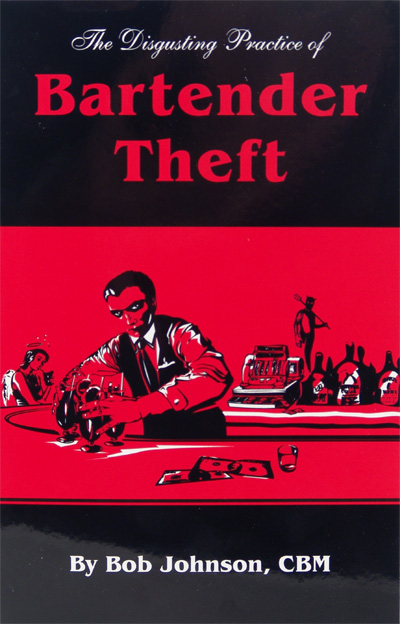 This is an alarming fact: most types of beverage operations lose a crippling percentage of profits through insider theft. The vast majority of employees in the beverage industry are honest and hardworking; it is the small minority of staff that can ruin your business through dishonesty. Insider theft can often escalate if there are weaknesses in the following general areas of the operation:
This is an alarming fact: most types of beverage operations lose a crippling percentage of profits through insider theft. The vast majority of employees in the beverage industry are honest and hardworking; it is the small minority of staff that can ruin your business through dishonesty. Insider theft can often escalate if there are weaknesses in the following general areas of the operation:
- Lack of supervision. Theft from behind the bar, storeroom or storage areas is a major problem. Curb losses by increasing supervision, either in person or by means of strategically positioned security cameras.
- Proprietor attitude. Don't make matters worse by treating all employees with suspicion. Get the honest staff on your side.
- Weak management. Unfortunately, some beverage managers compound the issue of insider theft by turning a "blind eye" and simply increasing prices to cover "shrinkage." Owners need to question unwarranted price rises.
- Pouring costs A common danger area. These costs need to be carefully monitored, especially in relation to bartender productivity.
- Inventory records. This is one of the easiest areas for dishonest employees to "fiddle the books." Tighten up your record keeping. Never leave inventory control to one person. Double-check.
- End-of-shift cash count. Another prime target area for insider theft. Never let a bartender reconcile the cash in the register at the end of his or her shift.
Bartender Theft: Top Ten Ploys
Controlling theft behind the majority of bars is no mean task; eliminating it altogether is virtually impossible. Temptation is a fine thing, and unfortunately, the opportunity for bartender theft is overwhelming. However, in the interests of long-term survival, you have no choice but to tackle the problem head on. Be wary of the following top-ten common ploys:
- Open theft. A bartender pours a drink, doesn't ring the cash register and puts the cash in a "holding" place, such as the tip jar.
- Overcharging. Bartender pockets the difference. A variation is to charge regular prices but ring up "Happy Hour" prices and, again, pocket the difference.
- Ringing "00" on the cash register. The bartender simply steals the value of the drink.
- Overpouring. Bartender hopes to get a heavy tip.
- Underpouring. Bartender keeps a mental note of the number of half measures poured throughout the evening and then thieves the equivalent value in drinks, gives them away or drinks them him-or herself.
- Rounds of drinks. Bartender rings up for a "round" rather than separate items. It makes it easier to inflate the overall price of a round of drinks, particularly if guests are unfamiliar with individual prices.
- Shortchanging. Common variations include: counting aloud while handing the customer less money, distracting the customer by sliding the change along the bar, and giving change for lower -denomination bills (while keeping the difference).
- "Soft" inventory. Bartender neglects to charge for the mixer component of a drink.
- Substitution - bringing in own liquor. This is often done with vodka because it is odorless and looks like water. Dilution is another similar ploy.
- Padding the tab. The bartender pencils in an inflated total and later erases it, replacing it with the correct total. Warning! Ban pencils from behind the bar.
Less Common (But Equally Damaging) Employee Theft
The more experienced the dishonest employee, the better equipped he or she is to manipulate the system. Thieving members of staff are quick to detect exactly how much an owner really understands about the business. In the beverage industry, take nothing for granted. Alert yourself to the following, somewhat extreme, possibilities.
- Reusing closed tabs. The bartender appears to ring up the drink price but, in actual fact, only halfway enters the tab into the register. He or she then hits "0" to give the impression of ringing it in.
- Over-ringing. When the customer isn't looking, the thief over-rings an amount on the tab and then re-rings the tab for less than the amount charged.
- "Paid outs." The bartender claims that the money was refunded for various reasons, such as faulty cigarette machines.
- Jigger substitution. The bartender brings in his own shot glass that looks identical to the official jigger but is actually smaller. Several short measures over a shift add up
- Changing shifts. It is easy for the thief to make, serve and collect several drinks during a busy "hand-over" period.
- Deliberate mistakes. Drinks are then returned and resold or given to a friend.
- Breaking empty bottles and pretending they were full. Full bottles are then requisitioned to replace the "broken" empty bottles.
- Substituting water in the drip tray. The bartender pretends he or she had to waste a pint to clear the lines and then pockets the difference.
This article is an excerpt from the Food Service Professional Guide to Controlling Liquor Wine & Beverage Costs, authored by Elizabeth Godsmark, published by Atlantic Publishing Company. This excerpt has been reprinted with permission of the publisher. To purchase this book go to:

 By Chris Parry
By Chris Parry
